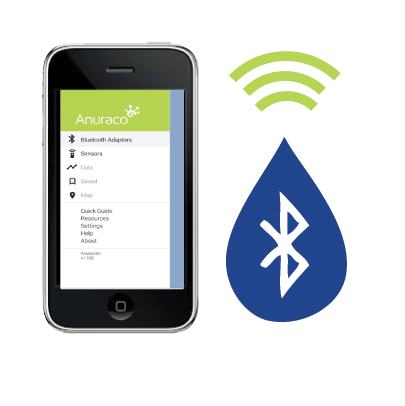What does Bluetooth Mesh enabled technology make possible?
Industrial-level solutions. BLE Mesh is Bluetooth’s response to the IoT and IIoT networking solutions. Mesh networking allows multiple to multiple (many devices connected to many devices) and create a coordinated team of smart devices sharing data. Creates industrial level networks that are robust, secure and scalable.
Long-range capacity. With Mesh technology, one of the biggest challenges of using Bluetooth can be overcome: the short range. If a user can access any node in the network and then have access to all of the devices through relay messages. This greatly extends the capacity to access devices that ordinarily would have to rely on other long-range technologies (LoRa, Cellular, etc.).
Multiple assets, with unique parameters, brought together. Being able to track and combine data on multiple assets (for example: a truck location, air temp. sensor data, operation personal) makes management of complicated sites, more efficient while taking fuller advantage of human resources.
Security. Adding provisioning, authenticating and NetKeys to devices (read more about it here at BluetoothSIG’s fundamentals of Bluetooth Mesh resource page), allows for greater IoT security.
What does that mean for engineers and their clients?
Network and multi-dimensional thinking. Engineers can design complex systems with more diverse devices ready to be plugged into these Mesh networks quickly and rapidly. Using BLE enabled circuits and modules, attached sensors and devices, gives plants and operators a way to analyze their network of things in new, responsive and dynamic ways.
New design challenges. Engineers will have to start planning for wireless firmware upgrades, larger capacity networks, and interference reduction strategies.
Smaller circuits and embedded sensors. Get your magnifying glasses ready everyone, because as usual, the more powerful the network, the smaller the Bluetooth modules are expected to get. Integrating sensors directly into BLE boards is going to be a very important aspect of the success of Mesh networks.
What can we expect to see in the next year?
A rise in robust Bluetooth apps. Universal and quality Bluetooth apps are going to become more and more sought after, as mesh networking grows and handheld devices continue to be the central identifier of individuals in nomadic company networks. Software that can make use of new powers of Mesh – such as Messages, States and Properties – will be more likely to help hardware products reach consumer and industrial use levels.
Engineering implementation and architecture challenges. The Bluetooth Mesh stack architecture is, for lack of a better way to put it, a somewhat interesting animal. The upside is, there’s a lot to work with and powerful capacity built in. The downside may be, the learning curve could be steep, for engineers who are comfortable with the star-networks or point-to-point networks that have been prominent in the IoT Development field.
For the full info on what Bluetooth SIG announced visit their site: https://www.bluetooth.com/what-is-bluetooth-technology/how-it-works/le-mesh.



